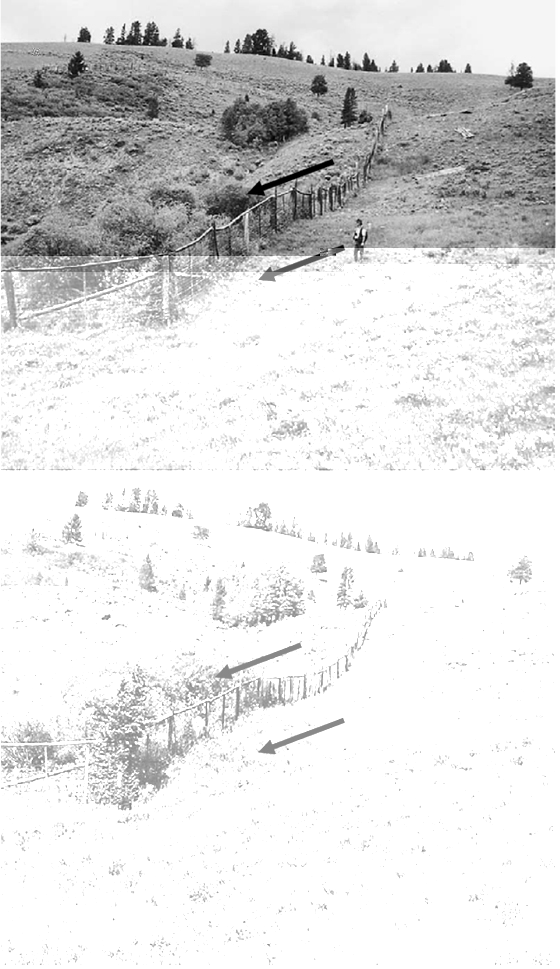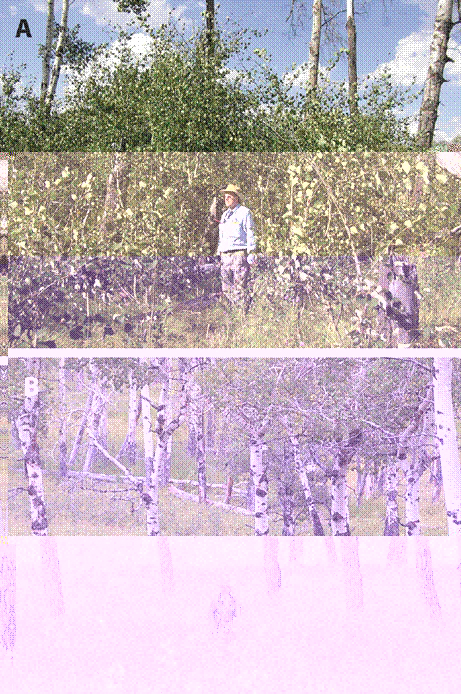

Figure Set 4: How do wolves impact elk and elk browsing, if not by direct population control?
FIGURE SET

Figure 4-1. Repeat photo pair showing riparian willow habitat on Blacktail Creek in the Yellowstone Northern Range: from 1996 (left), after 70 years of wolf extirpation; and in 2002 (right) after 7 years of wolf recovery. Notice the larger size and abundance of willows in 2002. From Ripple and Beschta (2004b).

Figure 4-2. Repeat photo pair of upland willow habitat and browsing exclosure in the Gallatin River Basin, Yellowstone Northern Range: from 1995 ((a), top), after 70 years of wolf extirpation; and in 2003 ((b), bottom) after 8 years of wolf recovery. In this habitat, the difference in willow height inside and outside of the exclosure is the same in both photos; arrows indicate location of willows in and out of the exclosure. From Ripple and Beschta (2004a).

Figure 4-3. Photo pair of aspen in riparian (A - top) vs. upland (B-bottom) habitat along the Lamar River in 2006. In riparian habitat there has been abundant recent recruitment of young aspen (3-4 m tall), while in an adjacent, more open upland there has been little recruitment (aspen <1 m tall). The dark, furrowed bark comprising approximately the lower 2.5m of aspen boles in (B) represents long-term damage due to bark stripping by elk. From Ripple & Beschta 2007.